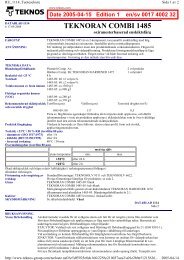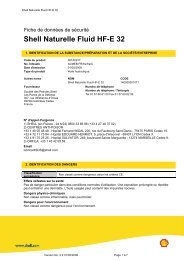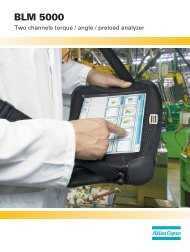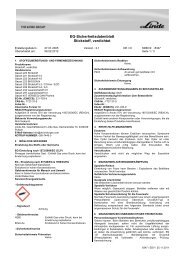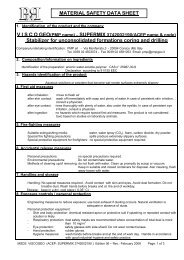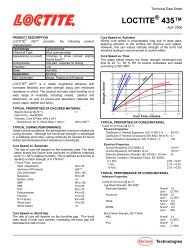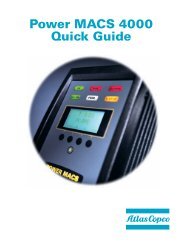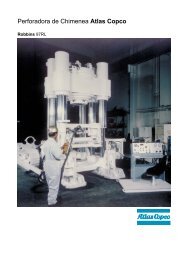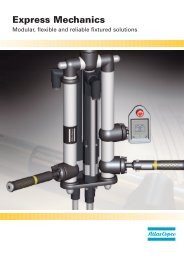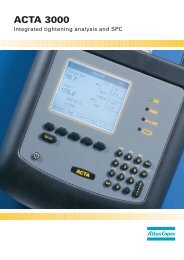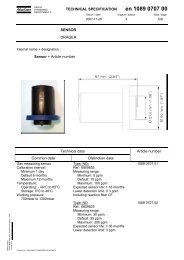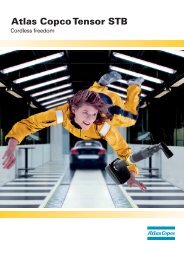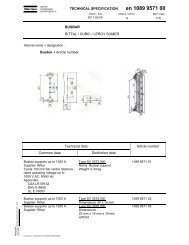Ergonomics - Atlas Copco
Ergonomics - Atlas Copco
Ergonomics - Atlas Copco
Create successful ePaper yourself
Turn your PDF publications into a flip-book with our unique Google optimized e-Paper software.
vacuum-flow of the unit and the pressure<br />
drop-flow for the system. In this plot the<br />
vacuum and pressure drop are plotted on<br />
one axis and the flow on the other. The<br />
intersection is the balance or working point<br />
for the system. It should be checked that the<br />
flow at this point matches the recommended<br />
flow for the tools used.<br />
Oil control<br />
Twenty years ago machine tool design-<br />
ers began developing vanes that could run<br />
against the cylinder wall without lubrica-<br />
tion. This development was motivated by the<br />
fact that oil used to lubricate the vanes was<br />
emitted in aerosol form in the exhaust air. It<br />
often entered the operator’s breathing zone,<br />
and could cause harm by irritating the skin.<br />
In some cases, female operators working on<br />
assembly lines complained about the smell of<br />
oil in their hair after a day’s work.<br />
Development followed two paths. One<br />
path was to create a more efficient lubrica-<br />
tion system that could minimize the amount<br />
of oil needed. The product is called Dosol.<br />
The other path was to design a vane ma-<br />
terial that did not require oil. Historically the<br />
vanes were made of bakelite reinforced with<br />
cotton fiber. The vanes run very fast along<br />
the air motor cylinder wall and speeds of up<br />
to 30 m/s are common. The forces between<br />
the cylinder wall and the vane are high.<br />
The friction coefficient must be kept low to<br />
avoid high temperature and wear and this<br />
has traditionally been done with oil. When<br />
run completely dry, it was not uncommon for<br />
vanes to have lifetimes of just minutes.<br />
After extensive testing with customers<br />
and in the laboratory, in 1990 new types<br />
of vanes were introduced that require no<br />
Modern turbine grinders can preferably<br />
be run on non-lubricated air.<br />
131



